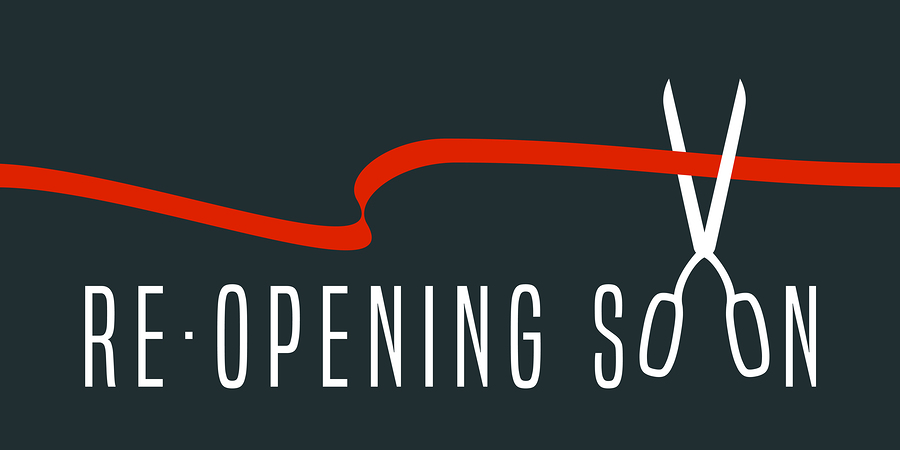
Negotiating the Price Gap Between Buyers and Sellers

Sellers generally desire all-cash transactions; however, oftentimes partial seller financing is necessary in typical middle market company transactions. Furthermore, sellers who demand all-cash deals typically receive a lower purchase price than they would have if the deal were structured differently.
Although buyers may be able to pay all-cash at closing, they often want to structure a deal where the seller has left some portion of the price on the table, either in the form of a note or an earnout. Deferring some of the owner’s remuneration from the transaction will provide leverage in the event that the owner has misrepresented the business. An earnout is a mechanism to provide payment based on future performance. Acquirers like to suggest that, if the business is as it is represented, there should be no problem with this type of payout. The owner’s retort is that he or she knows the business is sound under his or her management but does not know whether the buyer will be as successful in operating the business.
Moreover, the owner has taken the business risk while owning the business; why would he or she continue to be at risk with someone else at the helm? Nevertheless, there are circumstances in which an earnout can be quite useful in recognizing full value and consummating a transaction. For example, suppose that a company had spent three years and vast sums developing a new product and had just launched the product at the time of a sale. A certain value could be arrived at for the current business, and an earnout could be structured to compensate the owner for the effort and expense of developing the new product if and when the sales of the new product materialize. Under this scenario, everyone wins.
The terms of the deal are extremely important to both parties involved in the transaction. Many times the buyers and sellers, and their advisors, are in agreement with all the terms of the transaction, except for the price. Although the variance on price may seem to be a “deal killer,” the price gap can often be resolved so that both parties can move forward to complete the transaction.
Listed below are some suggestions on how to bridge the price gap:
- If the real estate was originally included in the deal, the seller may choose to rent the premise to the acquirer rather than sell it outright. This will decrease the price of the transaction by the value of the real estate. The buyer might also choose to pay higher rent in order to decrease the “goodwill” portion of the sale. The seller may choose to retain the title to certain machinery and equipment and lease it back to the buyer.
- The purchaser can acquire less than 100% of the company initially and have the option to buy the remaining interest in the future. For example, a buyer could purchase 70% of the seller’s stock with an option to acquire an additional 10% a year for three years based on a predetermined formula. The seller will enjoy 30% of the profits plus a multiple of the earnings at the end of the period. The buyer will be able to complete the transaction in a two-step process, making the purchase easier to accomplish. The seller may also have a “put” which will force the buyer to purchase the remaining 30% at some future date.
- A subsidiary can be created for the fastest growing portion of the business being acquired. The buyer and seller can then share 50/50 in the part of the business that was “spun-off” until the original transaction is paid off.
- A royalty can be structured based on revenue, gross margins, EBIT, or EBITDA. This is usually easier to structure than an earnout.
- Certain assets, such as automobiles or non-business-related real estate, can be carved out of the sale to reduce the actual purchase price.
Although the above suggestions will not solve all of the pricing gap problems, they may lead the participants in the necessary direction to resolve them. The ability to structure successful transactions that satisfy both buyer and seller requires an immense amount of time, skill, experience, and most of all – imagination.
The post Negotiating the Price Gap Between Buyers and Sellers appeared first on Deal Studio – Automate, accelerate and elevate your deal making.

Around the Web: A Week in Summary
The following information has been sourced by Business Brokerage Press for the benefit of the business brokerage community. The views of these articles do not necessarily represent the views of Business Brokerage Press. We hope you find this information helpful.
A recent article from M&A Source entitled “What is Needed to Restart M&A Markets Post-Pandemic?” discusses the likelihood of M&A activities coming back and what it will take to get there.
Prior to the COVID-19 pandemic, M&A activities were very strong with plenty of deal making. However, this all came to a halt due to the pandemic. Will M&A activities revert back to pre-pandemic levels? The author feels they can, with cooperation between sellers and buyers.
Valuation is based on past financial performance. A drop in cash flow, which has happened for a large number of businesses during the pandemic, would typically mean a drop in value. But this time, the drop is not due to changing consumer preferences or technological advances, it’s due to a one-time global health crisis. In this case, sellers and buyers can agree to treat this as an anomaly and adjust 2020 cash flows accordingly.
Click here to read the full article.
A recent blog post from Allan Taylor & Co. entitled “Are Business Owners Facing an Exit Plandemic? [SURVEY RESULTS]” discusses the results of a survey of 39 business owners about their intentions to sell their business and how COVID-19 has impacted their plans.
Key takeaways from the survey results include:
- Prior to COVID-19, 31% of respondents planned to exit within the next 5 years and 36% planned to exit within the next 2 years
- Due to COVID-19, 23% said their plans to exit are on hold indefinitely, 23% said their plans to exit are on hold temporarily, and 54% said there is no change in their plans to exit
- 59% of respondents said their intended exit strategy is to sell to an outsider
- 51% of respondents said their business value is down temporarily due to COVID-19
- 62% of respondents said 2020 sales will be down significantly and 28% said 2020 sales will be down slightly
- 46% of respondents said their business will recover but it will take more than a year to do so and 26% said their business will recover quickly
Click here to read the full article.
A recent article from Lexology entitled “How Does COVID-19 Affect Buying a Business?” discusses key considerations for those seeking to buy a business in light of COVID-19.
These key considerations include:
- Valuations have become more challenging due to the pandemic shutdown impacting 2020 financials
- Ease of obtaining financing, how long it takes to close, and financing terms have all been impacted
- Due diligence has become more intricate as the need to dig deeper has increased, yet due diligence is more difficult to accomplish due to restrictions on in-person meetings and activities
- Agreement conditions, representations, warranties, clauses and covenants are evolving
Click here to read the full article.
Read More
Getting Back to Business After the COVID-19 Pandemic

Historians have long known the historical relevance and impact of epidemics and pandemics. Despite our various technological advances and the complexity of our society, disease can instantly change the course of history. Not having a robust global system for dealing with disease and pandemics comes with a hefty price tag. In the case of the COVID-19 economic crisis, the price tag will no doubt be in the trillions.
You can’t control what has happened, but you can focus on what to do when the pandemic is over and life begins to slowly return to normal. In his recent article, “How to Hit the Ground Running After the Pandemic,” author Geoffrey James explores what businesses need to do to jumpstart their operations once the pandemic is in the history books.
James wants his readers to understand that the pandemic will end and that business owners need to be ready to charge back in when the pandemic is over and the economy rebounds. As James points out, if history is any indicator, the economy will eventually rebound.
Almost everything about this economic downturn is unique. Take, for example, the fact that the U.S. has just seen its largest-ever economic expansion. The gears and wheels of the economy were spinning along quite quickly before the pandemic hit. This could help restart the economy faster than in past severe economic downturns. In short, many experts feel that this particular economic downturn could be short, but of course, this is speculation. There is no way to know for sure until COVID-19 is in the rearview mirror.
James correctly asserts that businesses need to put together a plan for how they will get up and running as soon as the pandemic is over. His recommendation is to divide your plan and thinking into four distinct categories: Facilities, Personnel, Manufacturing, and Marketing.
Each of these categories has three key questions that business owners should be asking themselves so that their businesses are ready to hit the ground running when COVID-19 is over. Below are a few of the key questions James recommends asking.
- How can we create the most sanitary and disease-free workplace possible?
- Which employees will continue to work from home?
- When there’s a spike in demand, how will we ramp-up?
- What will be our “We’re Back!” marketing message?
The pandemic caught everyone except the experts off guard. Moving forward, business leaders, think tanks, and politicians alike need to work to develop and implement robust plans to minimize the damage caused by pandemics. Humanity, and business, has been “lucky” several times in recent years, as we dodged bullets ranging from Ebola to SARS.
As James points out in his article, “Failing to plan is planning to fail.” Businesses need to plan for the recovery and they need to plan for another pandemic because another one is quite possible especially if better planning and decision making are not firmly entrenched in place.
Copyright: Business Brokerage Press, Inc.
The post Getting Back to Business After the COVID-19 Pandemic appeared first on Deal Studio – Automate, accelerate and elevate your deal making.

Around the Web: A Week in Summary
The following information has been sourced by Business Brokerage Press for the benefit of the business brokerage community. The views of these articles do not necessarily represent the views of Business Brokerage Press. We hope you find this information helpful.
A recent article from Axial entitled “Lower Middle Market Deal Makers Lean Into Digital Tools” discusses how deal making has taken on an increased level of digital activity due to the effects of COVID-19.
In recent years, digital tools have already become a significant part of deal making. Online deal sourcing, virtual data rooms, and back-office technology are some of the ways deal making has gone digital.
The COVID-19 pandemic has caused an increased need for digital activities as in-person meetings have come to a sudden halt. Video conferencing is now being used for negotiation and due diligence. However, most deal professionals feel only so much can be done digitally and at some point in-person meetings are necessary in order to close the sale.
Click here to read the full article.
A recent blog post from Exit Strategies Group entitled “Valuing a Business in the Time of COVID-19” discusses the processes involved with and benefits of valuing your business during a situation such as COVID-19.
Difficult times can sometimes bring a sense of urgency to make a quick decision. However, it is better to slow down and analyze. A valuation does just that. Three key inputs for determining value include cash flow, growth and risk. Once a formal valuation is completed, you’ll know how much your business is worth today.
Once you know what your business is worth, you can start analyzing your options. Options may include developing an exit strategy, option plans, gifting and bankruptcy.
Click here to read the full article.
A recent article from Mondaq entitled “Looking To Buy A Business? M&A Due Diligence In The Age Of COVID-19” explores important considerations for buyers in light of COVID-19.
Buyers who are well-prepared and well-positioned to make an acquisition may be seeing more opportunities to purchase a business in the coming months. These opportunities are likely to be different than a typical acquisition, however, due to the effects of COVID-19. Many businesses have had to make significant changes and decisions in order to survive.
The following questions should be raised during due diligence:
- Third Party Agreements – Is the business in default of any contractual obligations? Have any arrangements been made to defer or alter contractual obligations?
- Supply Chain Disruption – Have any suppliers been unable to fulfill their obligations? Can the business pivot to another supplier if needed?
- Insurance – Does the business have any insurance policies with coverage for ongoing or future losses due to the pandemic?
- IT Systems – Are sufficient systems in place to ensure productivity and facilitate staff functions? Do these systems have ample security?
- Employees – Have there been layoffs, changes in compensation, or changes in responsibilities that may involve liabilities? Are there clear policies to protect the safety of employees?
- Government Benefits and Measures – Has government aid been accepted and have all related requirements been met? Have taxes been deferred?
Click here to read the full article.
Read More
COVID-19 Advice for Hospitality Businesses

Clearly, some industries are taking a bigger hit from COVID-19 than others. Any industry that requires a great deal of interaction with the public, or where people gather in large groups, are obviously having very tough times. Movie theaters and restaurants, for example, have essentially gone dark. Some restaurants are easing the bloodletting a bit by providing delivery, but in the vast majority of cases, revenue pales in comparison to what it was prior to the pandemic.
While there is no doubt that the hospitality industry is suffering right now, business owners should understand that there are concrete steps they can take now to improve their odds of surviving the pandemic. In this article, we’ll explore a few of these key ideas.
One of the areas every decision maker and business owner in the hospitality industry should be thinking about right now is staff. During a recent industry roundtable discussion, John Howe, chairman of the International Association of Business Intermediaries, pointed out that staffing problems will continue long after the pandemic has paused or is over. He believes that hospitality businesses will have a tough time getting the staff they need, especially in the short run.
His key piece of advice is to work to have a line on people for key positions. This will allow you to at least get back up and running with basic operations. While it may be a while before hospitality businesses are at “full steam,” it is critical that they are able to open up in some fashion, as this will translate into much needed revenue. Hospitality businesses looking to survive the pandemic should focus on making certain that key positions have been filled. In this way, the post-pandemic relaunch can be as smooth as possible.
Founder and President of Cornerstone Business Services, Scott Bushkie, explained that there are a lot of hospitality industry people out of work right now, and this represents a real opportunity. Now, is the perfect time to potentially upgrade staff. There are plenty of experienced and proven hospitality people looking for positions. The new people you bring may come with extra benefits such as bringing their customers, suppliers, and other relationships with them. For those in the hospitality industry who may have always wanted to upgrade their team, now is perhaps the best time in history to do so.
Employees are a foundational element of your business. Improving your staff means you’ve improved your business and boosted your odds of survival. Bringing in new team members can help you prepare for the post-pandemic business environment. It also offers up the potential for you to upgrade an important element within your business.
Copyright: Business Brokerage Press, Inc.
The post COVID-19 Advice for Hospitality Businesses appeared first on Deal Studio – Automate, accelerate and elevate your deal making.
